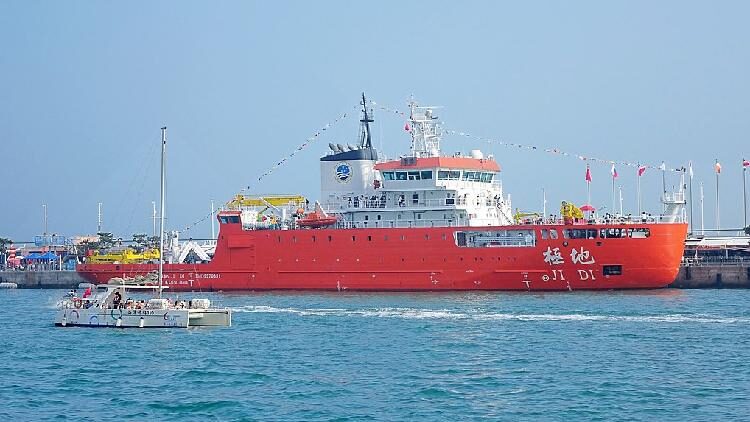China’s latest icebreaking research vessel, Jidi, has set sail on its maiden sea ice research mission in Liaodong Bay, located in the Bohai Sea off China’s northern coast. The mission aims to study sea ice development, enhance marine weather forecasting, and undertake a series of scientific explorations across various fields.
Launched in 2024, the Jidi—which means “Polar Region”—measures approximately 90 meters in length and 17.8 meters in width. With a displacement of 4,600 tonnes and a navigation capability of 14,000 nautical miles, this state-of-the-art vessel represents a new generation of China’s icebreaking research ships.
The current expedition in Liaodong Bay is the first comprehensive winter marine scientific research mission of its kind in the Bohai Sea. It brings together multiple research institutes and universities from across China, focusing on multi-element centralized observation, timed navigation observation, and specialized studies such as sea ice observation and remote sensing technology.
“The research team consists of 20 members from 12 academic institutions in China,” said Li Ke, director of the Sea Ice and Climate Forecast Division at the Ministry of Natural Resources’ North Sea Forecast and Disaster Relief Center. “Our survey focuses on hydrology, meteorology, biology, chemistry, ice surface spectroscopy, atmospheric chemistry, and other factors like the spotted seal.”
This comprehensive research spans a wide range of fields from aerospace to seabed studies. The findings are expected to provide valuable insights for ice-season navigation, offshore oil and gas platform operations amid extreme weather, ecological research, and more.
Reference(s):
cgtn.com








